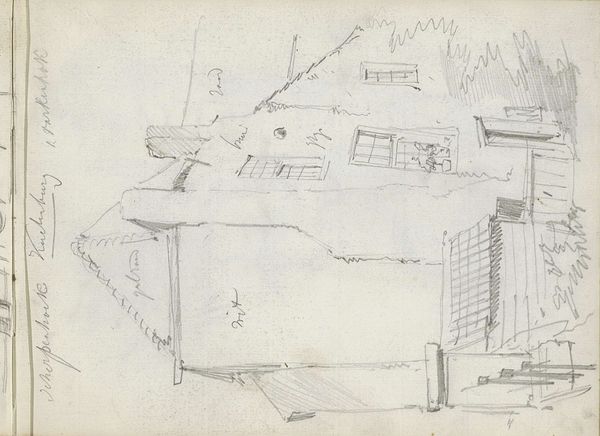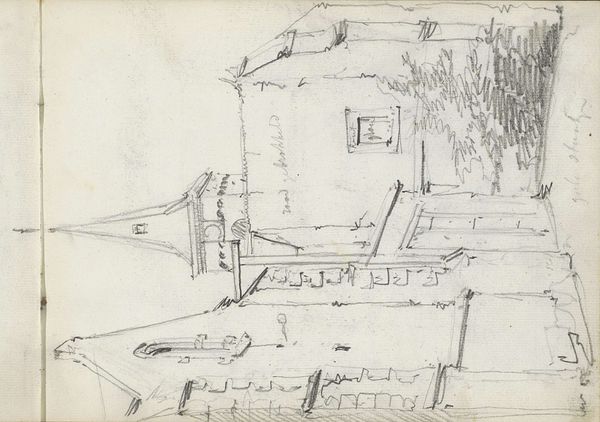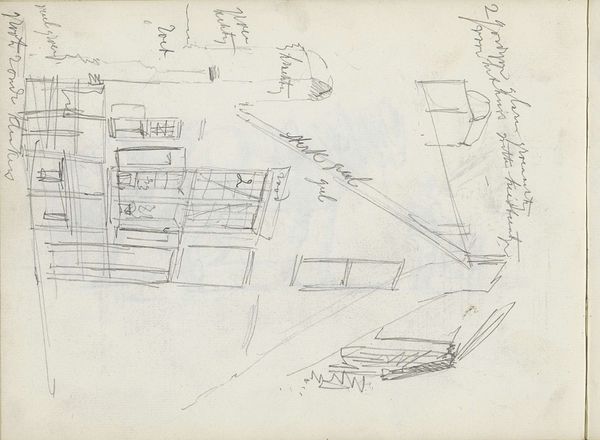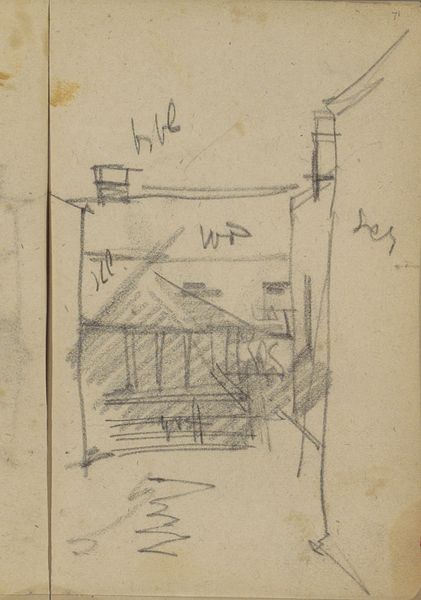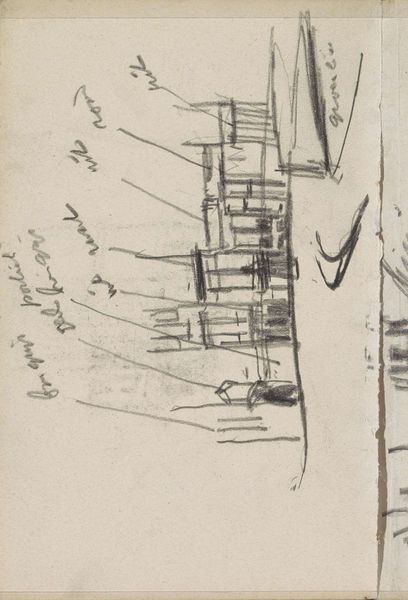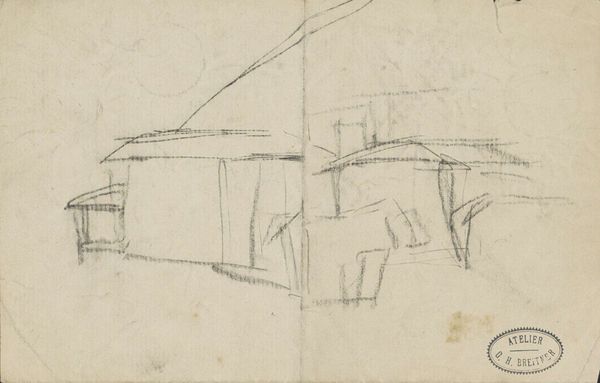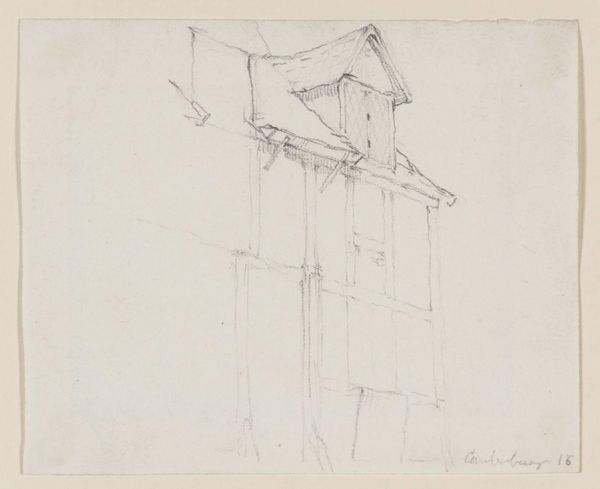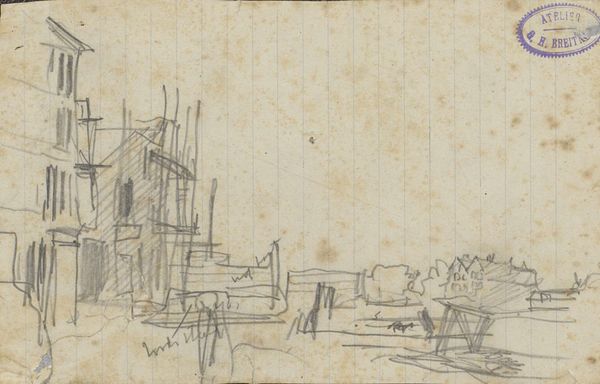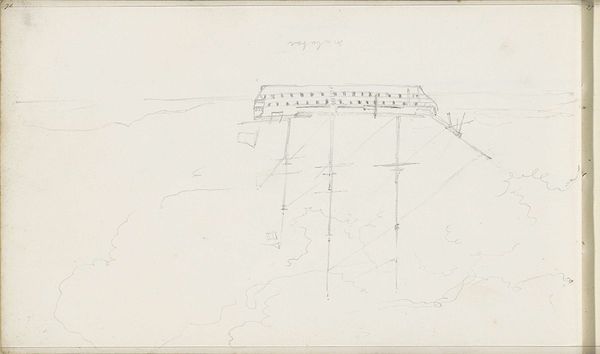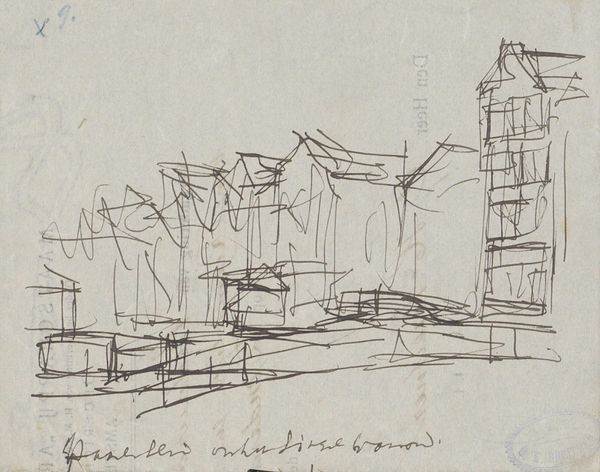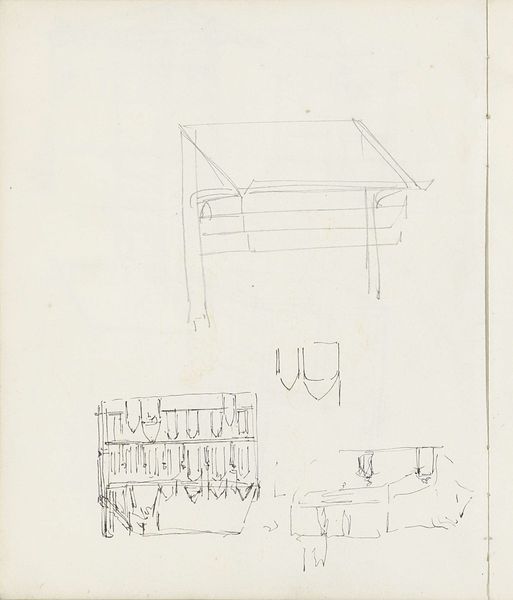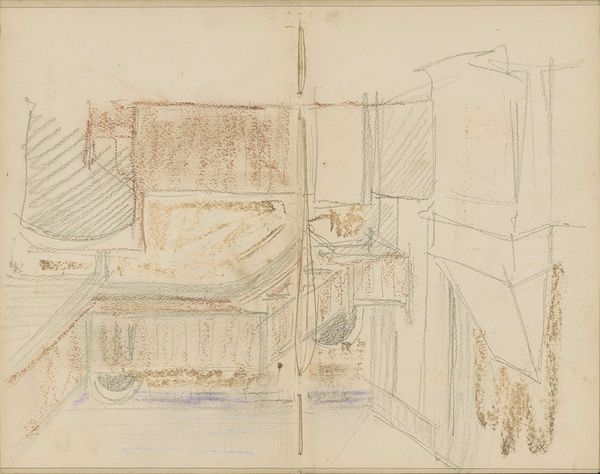
Copyright: Public Domain: Artvee
Curator: This pencil drawing by Karl Wiener, titled "Bau des Krematoriums bei Graz," dates back to 1931 and depicts the construction of a crematorium near Graz. Editor: It strikes me as a drawing filled with a sense of foreboding. Even with the scaffolding, the basic form already suggests an oppressive weight. Curator: Absolutely. I think placing it in the context of 1931 is crucial. The Weimar Republic was crumbling, anxieties were high, and the rise of extremist ideologies loomed large. Wiener's drawing, although seemingly documenting mere architecture, speaks to those anxieties through the depiction of an emerging and socially fraught architectural type. Editor: The stark simplicity almost gives it the feel of a diagram. Even with the soft touch of the pencil, the lack of figures and other surroundings draws all focus onto the crematorium itself. Were crematoriums particularly controversial then? Curator: They were increasingly prevalent as cities grew, but remained deeply contested spaces due to their challenge to traditional religious beliefs around death and burial. Remember that modernity was reshaping societal structures, including how we deal with the dead, and anxieties around that transformation were, quite literally, materializing in buildings like this. The drawing captures that moment of intense social and spiritual transformation. It's an icon of modernity's uneasy relationship with mortality. Editor: I see that echoed in the circular windows, repeated at the top, looking almost like watchful eyes. Did Wiener use similar visual motifs in other works? Is there a continuity of imagery there, some premonition being worked out? Curator: Wiener's broader body of work shows consistent themes of urban anxiety and social unease, frequently rendered in stark architectural imagery. The crematorium as a symbol encapsulates many of those concerns: technological advancement, the impersonal nature of modern life, and the ever-present specter of death. His position as a leftist architect at this point too, gives his drawings like these a politically progressive voice concerned with society's path forward. Editor: It's unsettling how clearly that dread translates even now, almost a century later. These aren't just lines on paper, they're echoes of fears about what we become. Curator: Precisely, it invites us to engage with how societies grapple with anxieties through monumental architecture. Editor: Thank you. I feel this artwork gives a palpable sense of a transitional moment. Curator: Indeed, a stark visual of a society in flux.
Comments
No comments
Be the first to comment and join the conversation on the ultimate creative platform.
